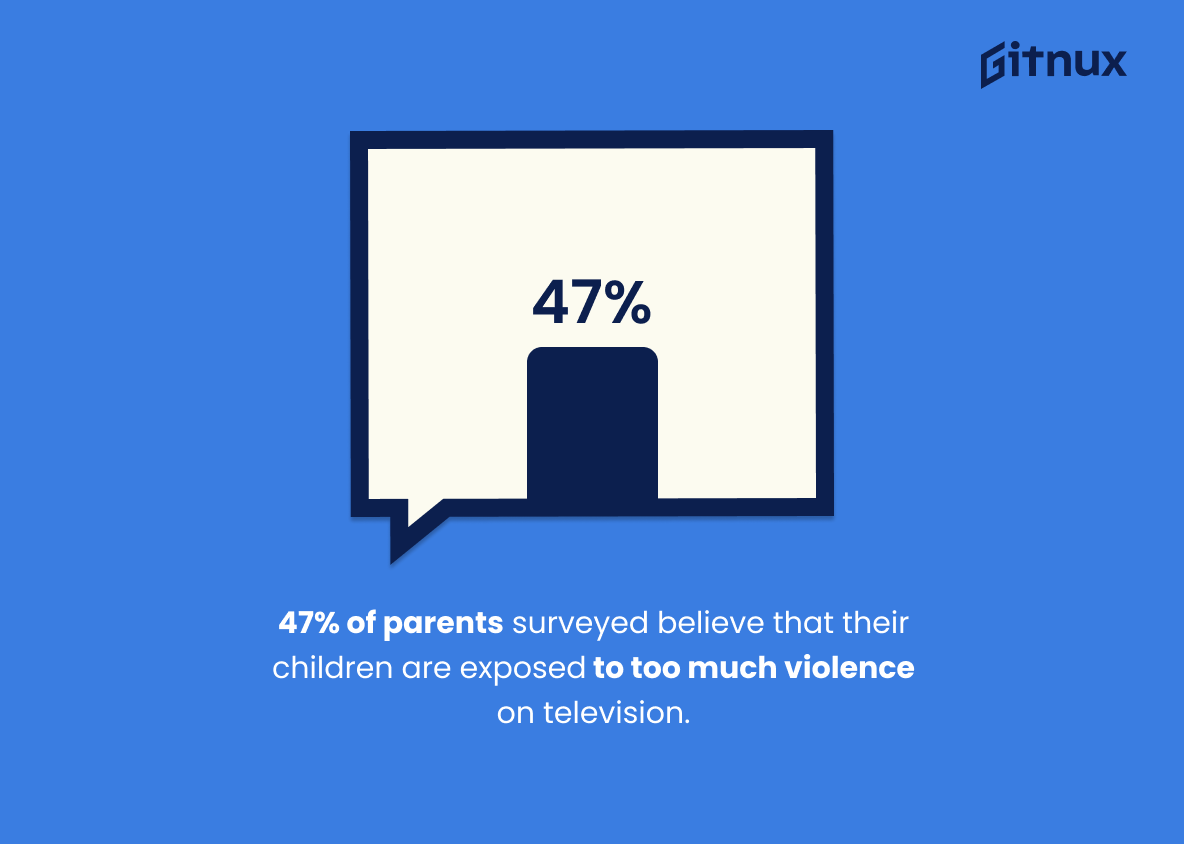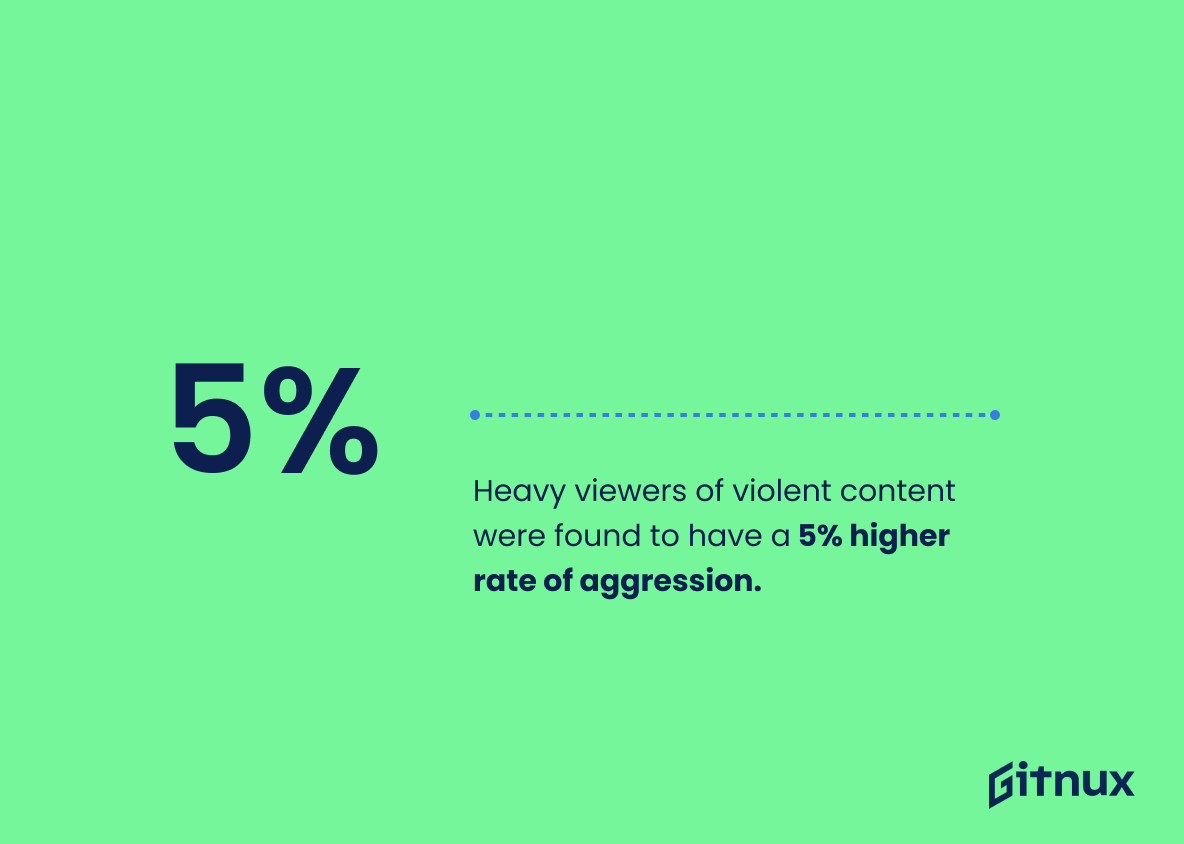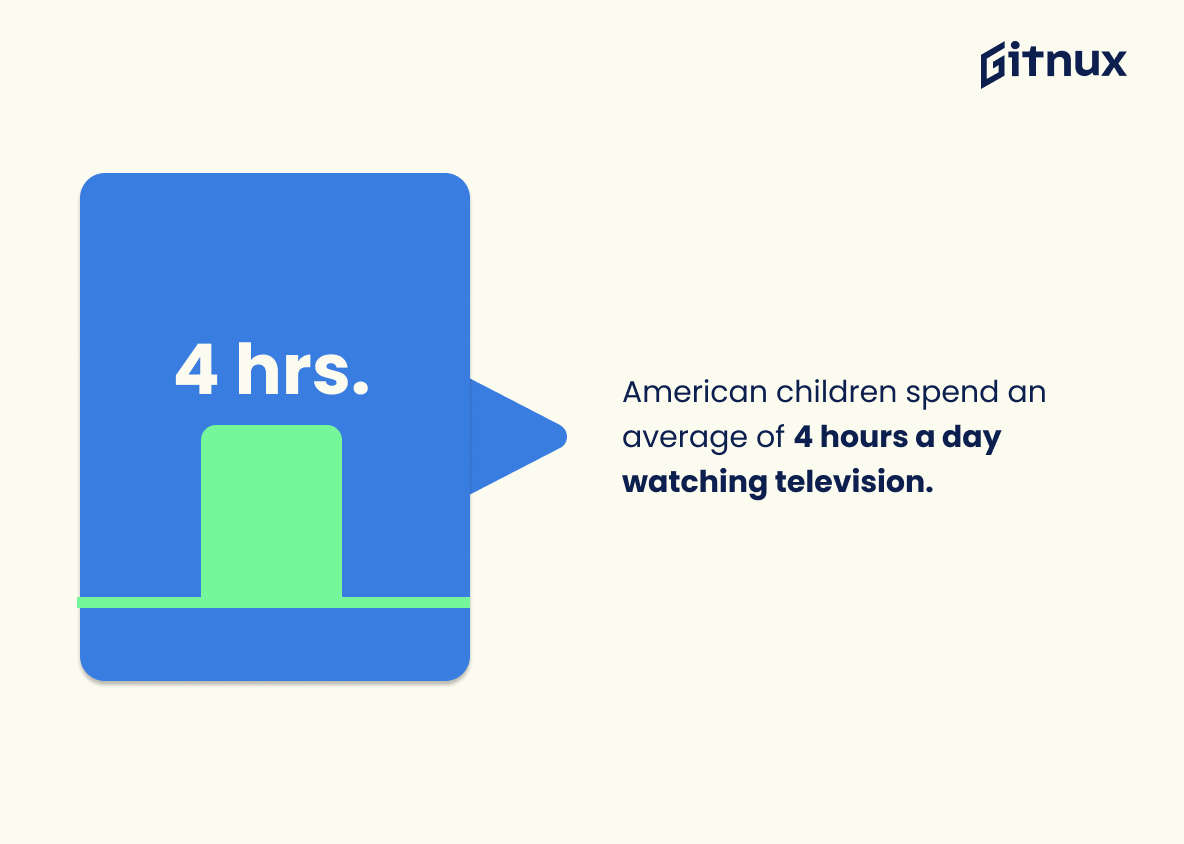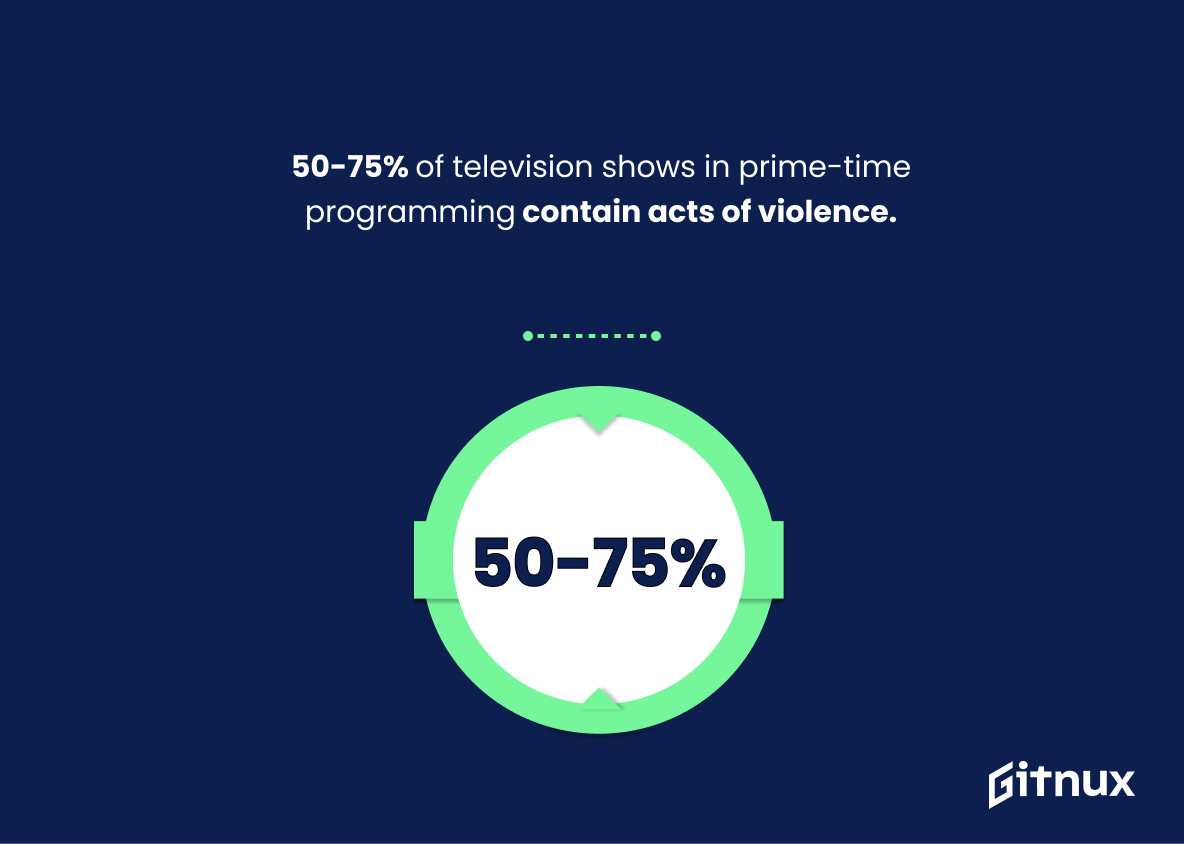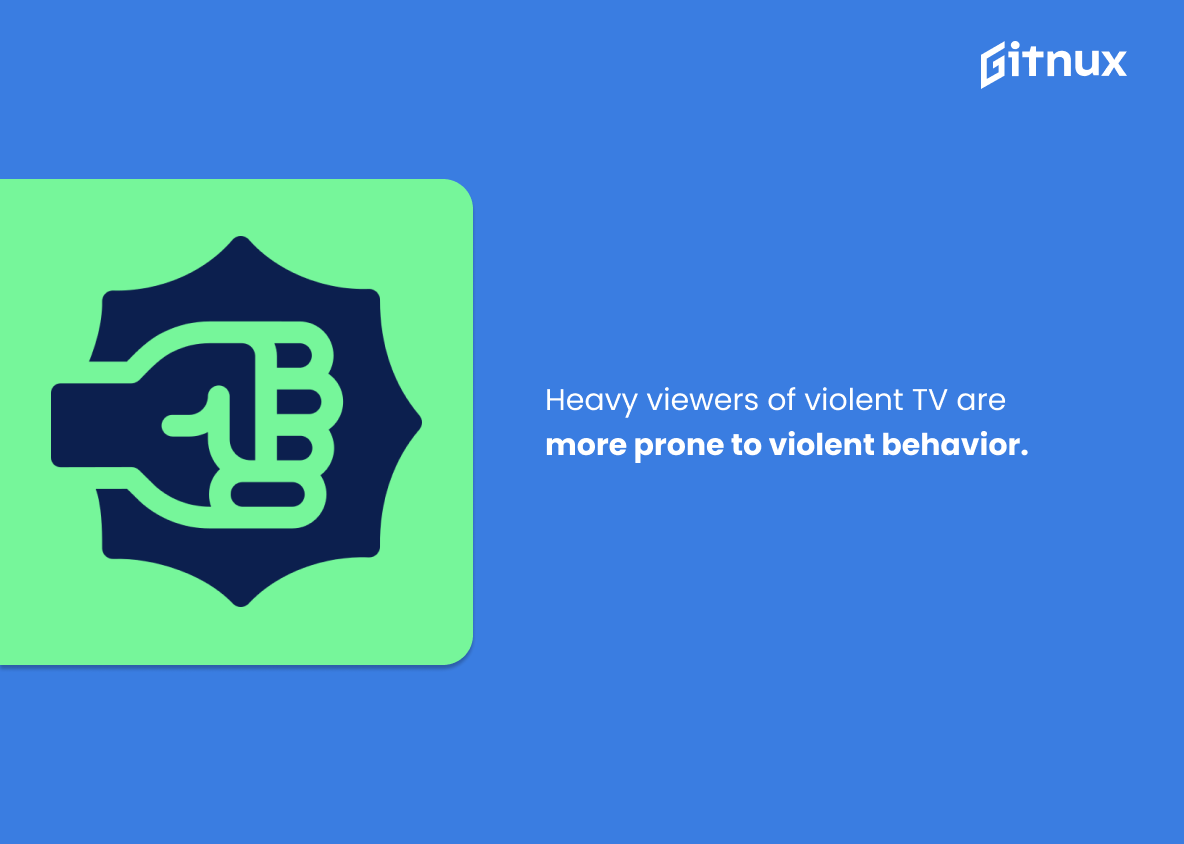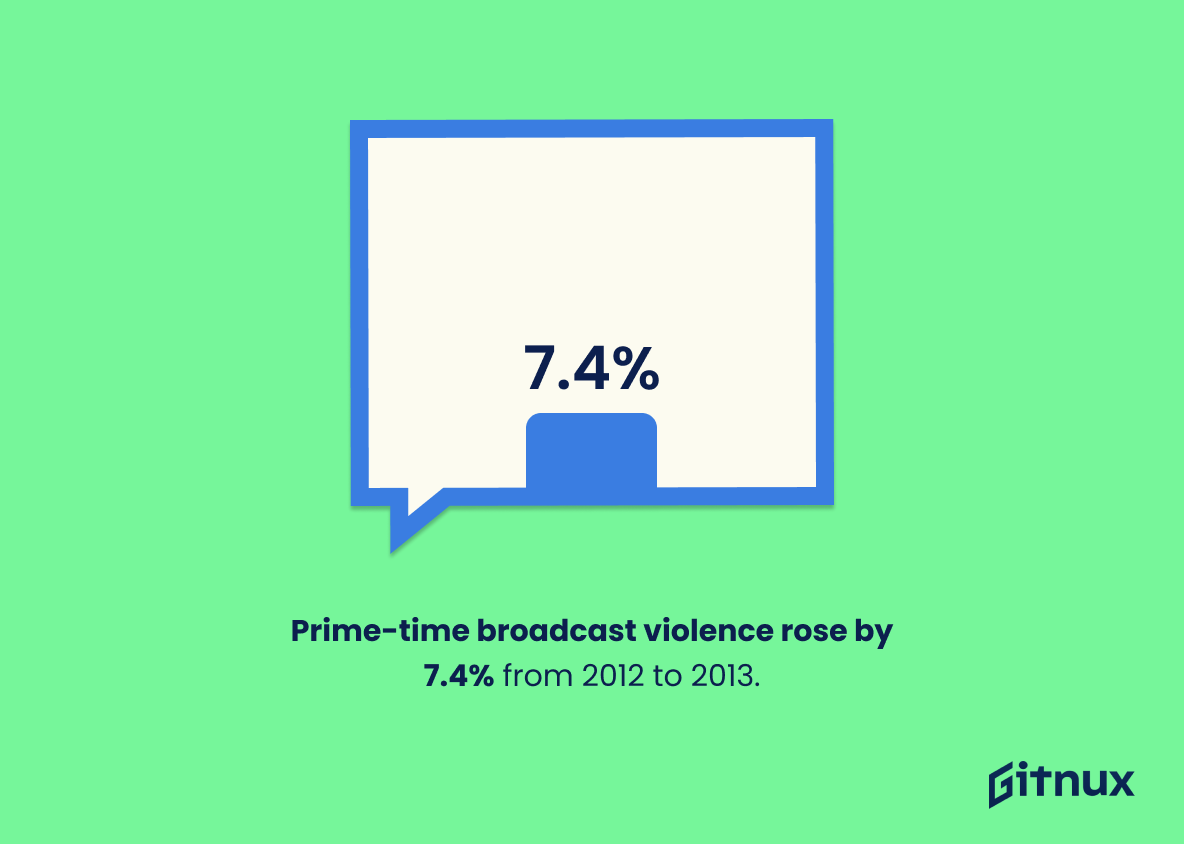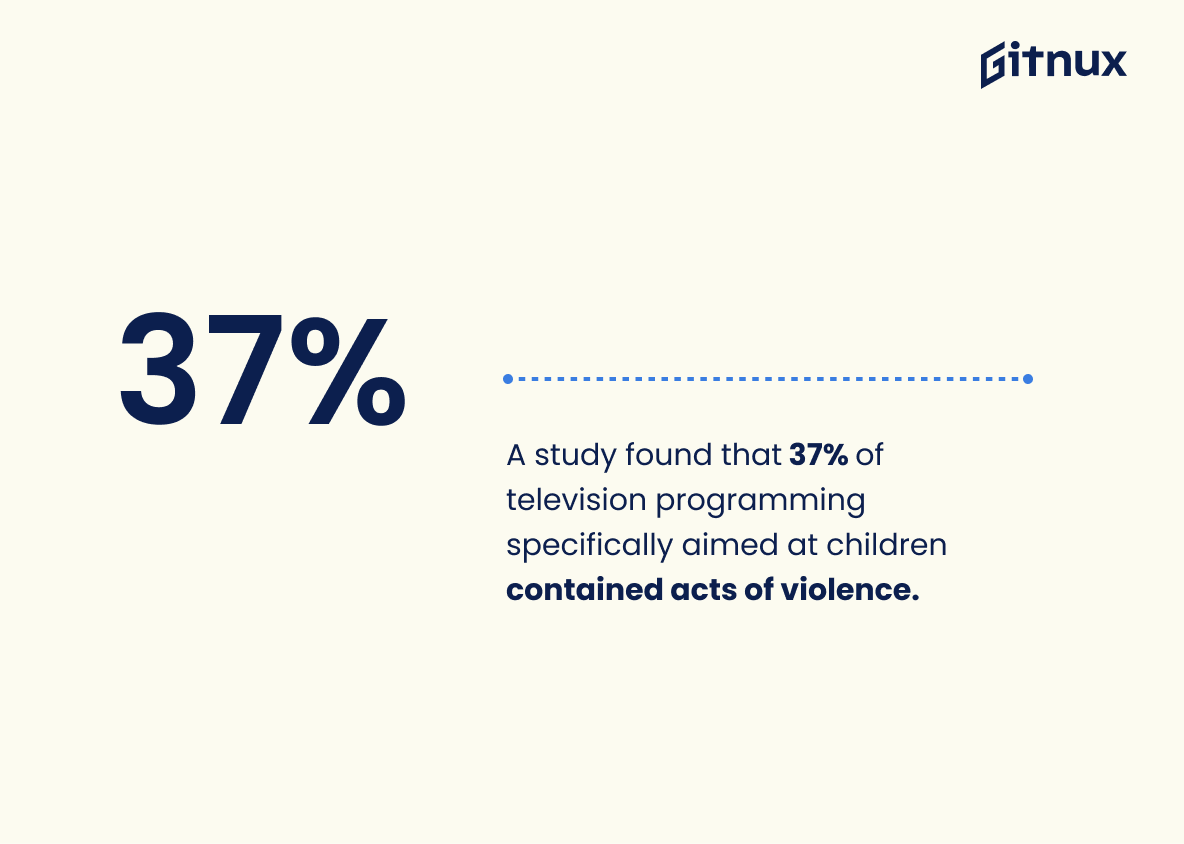It is no secret that television violence has a significant impact on viewers, especially children. Recent studies have revealed some alarming statistics about the amount of violent content seen by young people and its potential effects. Here are 20 shocking facts about television violence: 1) On average, children are exposed to 200,000 violent acts on television by the age of 18; 2) Television shows display 812 violent acts per hour, on average; 3) 57% of television programs contain violent content; 4) By the time an average American child leaves elementary school they will have seen 8,000 murders on TV; 5) A 15-year longitudinal study found that watching over 3 hours of TV per day at age 14 was associated with a higher risk of antisocial behavior at age 29; 6 ) 47% parents surveyed believe their children are exposed to too much violence on TV ; 7 ) In 2017 33 % characters in top grossing films were involved in some kind or act if violence ; 8 ) Children who watch more than three hours’ worth of televised media containing aggressive behaviour each day increase their chances for exhibiting aggression themselves by twofold ; 9 ) Heavy viewers if Violent Content Were Found To Have A 5 % Higher Rate Of Aggression Than Light Viewers 10);A 15 year Study Found That Watching Violence On Television At Ages Six And Seven Was Associated With An Increased Risk Of Violent Behavior In Adolescents 11 ); Reports Indicate That Depiction Of Violence On Prime Time Network Television Increased By 75 % From 1972 To 1996 12 ); American Children Spend An Average Of Four Hours Per Day Watching Televised Media 13 ); 50 -75 Percent If Programs Shown During Prime Time Programming Contain Acts If Violence 14);Television Violence Can Lead To A 13 –15 Increase In Viewer Aggression Levels 15);A 2001 Study Found That 59 Percent OF American Programmes Portrayed Some Form IF VIOLENCE 16):Violent Behaviour Is More Likely TO Occur IN HEAVY VIEWERS OF VIOLENT TELEVISION PROGRAMS THAN IN LIGHT VIEWERS 17 ):The Number IF Incidents Portrayed IN PRIME TIME BROADCASTING INCREASED BY 7 .4 PERCENT BETWEEN 2012 AND 2013 18 ):37 percent OF TELEVISED MEDIA SPECIFICALLY TARGETED AT CHILDREN CONTAIN ACTS IF VIOLENCE 19):40 percent Participants Believed Cartoon VioLence As Harmful AS MORE REALISTICTVVIoLence 20):Exposure TO Televsion ViOLeNce IS ASSOCIATED WITH AN INCREASED ACCEPTANCE AGGRESSIVE ATTITUDES AND BEHAVIORS. It is clear from these statistics that there needs to be greater awareness and regulation when it comes to how much exposure our youth receive from this type of programming.
Television Violence Statistics Overview
By the time an average American child leaves elementary school, they will have seen 8,000 murders on TV.
This statistic is a stark reminder of the prevalence of violence in television programming that children are exposed to. It highlights the potential for children to be desensitized to violence, and the potential for them to develop a skewed perception of the world around them. It is a sobering reminder of the need for parents to be aware of the content their children are consuming, and to take steps to ensure that they are not exposed to excessive violence.
47% of parents surveyed believe that their children are exposed to too much violence on television.
This statistic is a powerful indicator of the impact television violence has on parents and their children. It shows that a large portion of parents are concerned about the amount of violence their children are exposed to on television, and it serves as a reminder that parents should be aware of the content their children are viewing. This statistic is an important part of the conversation about television violence and its effects on children.
Heavy viewers of violent content were found to have a 5% higher rate of aggression.
This statistic is a powerful indicator of the potential impact of television violence on viewers. It suggests that those who consume a large amount of violent content are more likely to display aggressive behavior, which could have serious implications for society. This statistic is a reminder that television violence should not be taken lightly, and that it can have a real and lasting effect on viewers.
American children spend an average of 4 hours a day watching television.
This statistic is a stark reminder of the amount of time American children are exposed to television, and the potential for them to be exposed to violence on the screen. It highlights the importance of monitoring what children watch and ensuring that they are not exposed to inappropriate content.
50-75% of television shows in prime-time programming contain acts of violence.
This statistic is a stark reminder of the prevalence of violence in prime-time television programming. It highlights the need for greater awareness of the potential impact of such content on viewers, particularly young people. It also serves as a call to action for parents, educators, and other stakeholders to take steps to reduce the amount of violence in television programming.
Violent behavior is more likely to occur in heavy viewers of violent television programs than in light viewers.
This statistic is a crucial piece of evidence in understanding the effects of television violence on viewers. It highlights the fact that those who watch violent television programs more frequently are more likely to exhibit violent behavior, suggesting that there is a direct correlation between the two. This is an important point to consider when discussing the impact of television violence on viewers, as it provides a clear indication of the potential consequences of excessive viewing.
The number of violent incidents portrayed in prime-time broadcast programming increased by 7.4% between 2012 and 2013.
This statistic is a stark reminder that television violence is on the rise. It shows that in the span of one year, the amount of violent incidents portrayed in prime-time broadcast programming increased significantly. This is a cause for concern, as it could lead to an increase in violent behavior in viewers, especially young children.
A study found that 37% of television programming specifically aimed at children contained acts of violence.
This statistic is a stark reminder of the prevalence of violence in television programming specifically aimed at children. It highlights the need for parents to be aware of the content their children are exposed to, and to take steps to ensure that they are not being exposed to violent content. It also serves as a call to action for television networks to be more mindful of the content they are producing for children, and to take steps to reduce the amount of violence in their programming.
Conclusion
The statistics presented in this blog post demonstrate the prevalence of violence on television and its potential effects. On average, children are exposed to 200,000 violent acts by age 18 and 812 violent acts per hour. 57% of television programs contain some form of violence, with 47% of parents believing their children are exposed to too much. A 15-year longitudinal study found that watching over 3 hours a day at age 14 was associated with an increased risk for antisocial behavior at 29 years old. Additionally, 33% characters in top grossing films were involved in some kind of violent act while heavy viewers had a 5% higher rate aggression than light viewers. Finally, exposure to TV violence is linked to an increase acceptance aggressive attitudes as well as behaviors among those who watch it regularly. These findings suggest that there may be cause for concern when it comes to how much violence our society is consuming through media outlets such as television shows and movies
References
0. – https://www.commonsensemedia.org
1. – https://www.karger.com
2. – https://www.apa.org
3. – https://www.tandfonline.com
4. – https://www.europepmc.org
5. – https://www.files.eric.ed.gov
6. – https://www.pewresearch.org
7. – https://www.ncbi.nlm.nih.gov

